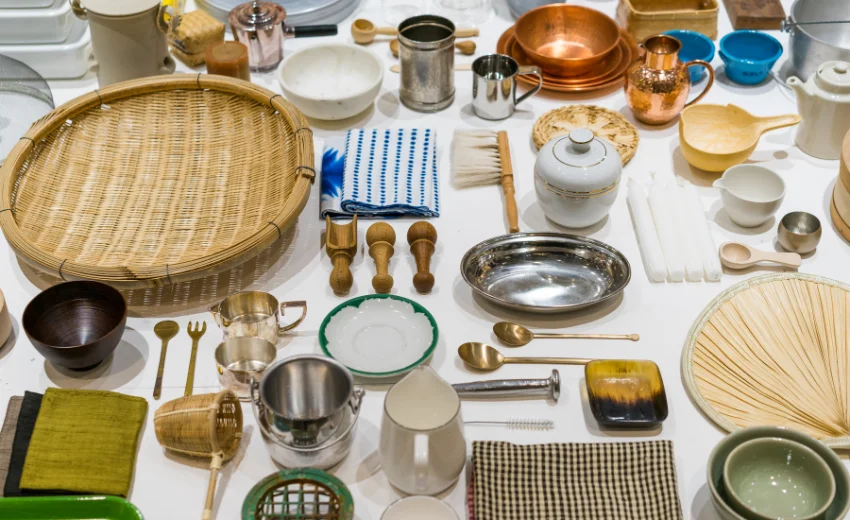In today’s world, many people are turning their passions into profitable ventures. Selling homemade items from home is one such rewarding opportunity. Whether you’re an artist, baker, crafter, or creator, your talents can become a steady source of income with the right approach. This guide will walk you through the essential steps to turn your homemade creations into a successful business, all from the comfort of your home.
Why Start Selling Homemade Items from Home?
The appeal of selling homemade items lies in its flexibility and the opportunity to do what you love. Here are a few reasons this business model is so popular:
- Low Startup Costs: You can often start small with minimal investment in materials or tools.
- Creative Freedom: You have complete control over your products, from design to pricing.
- Growing Demand: Consumers increasingly value handmade, personalized, and locally sourced goods.
- Convenience: Operating from home eliminates the need for expensive storefronts or long commutes.
If you’ve ever considered turning your skills into a profitable endeavor, now is the perfect time to explore the possibilities.
Step 1: Choose Your Niche
The first step in selling homemade items is to decide what you’ll create. Selecting the right niche helps you stand out in a competitive market.
- Identify Your Passion: What are you good at making? Consider candles, soaps, baked goods, jewelry, knitted clothing, or artwork.
- Research the Market: Look into trending products and evaluate the competition. Platforms like Etsy or Pinterest can inspire.
- Know Your Audience: Understand who would buy your products. For example, handmade baby blankets might appeal to new parents, while custom jewelry could attract fashion enthusiasts.
A well-defined niche makes it easier to target the right customers and build a loyal following.
Step 2: Plan Your Business
Before you start selling, create a solid plan to guide your business.
- Set Goals: Define what success looks like for you. Do you want a side hustle or a full-time income?
- Create a Budget: Calculate the costs of materials, tools, packaging, and marketing. Determine your pricing to ensure profitability.
- Choose a Business Name: Select a name that reflects your brand and is memorable. Check its availability for domain registration and social media handles.
- Understand Legal Requirements: You may need permits or licenses to sell certain items, such as food or beauty products, depending on your location.
A well-thought-out business plan will help you stay focused and organized as you grow.
Step 3: Set Up Your Workspace
Operating a home-based business requires a dedicated workspace to ensure efficiency and professionalism.
- Choose the Right Spot: Find a quiet, well-lit area where you can work without distractions.
- Organize Your Tools: For easy access, keep your materials and equipment neatly arranged.
- Maintain Cleanliness: If you’re making food or beauty products, adhere to health and safety standards.
A functional workspace enhances productivity and makes your business feel more legitimate.
Step 4: Create High-Quality Products
The quality of your products will determine the success of your business. Focus on delivering items that exceed customer expectations.
- Source Quality Materials: Invest in durable and premium materials to ensure customer satisfaction.
- Perfect Your Craft: Practice regularly to refine your skills and create products you’re proud to sell.
- Offer Customization: Personalized items, like monogrammed gifts or custom colors, are highly appealing to buyers.
Remember, your products represent your brand, so strive for excellence with every piece.
Step 5: Build an Online Presence
In today’s digital age, an online presence is essential for reaching customers and growing your business.
- Create a Website: Use platforms like Shopify, WordPress, or Wix to build a professional online store. Include high-quality photos, detailed product descriptions, and an easy checkout process.
- Leverage Social Media: Platforms like Instagram, Facebook, and Pinterest are ideal for showcasing your work, engaging with potential customers, and promoting new products.
- List on Marketplaces: To tap into the large customer base of popular sites like Etsy, eBay, or Amazon Handmade, consider selling on these sites.
- Start a Blog or YouTube Channel: Share your creative process, tips, and stories to connect with your audience and build trust.
Your online presence is your digital storefront—make it appealing and user-friendly.
Step 6: Market Your Products
Marketing is critical to attracting customers and generating sales. Use a mix of strategies to reach your target audience effectively.
- Use Paid Ads: Platforms like Google or Facebook can help you reach a wider audience.
- Engage with Your Community: Participate in local events, fairs, or farmer’s markets to showcase your products in person.
- Offer Discounts and Promotions: Encourage first-time buyers or repeat purchases with special offers.
- Ask for Reviews: Positive customer reviews can boost your credibility and increase sales.
Consistent marketing efforts will help you build brand recognition and attract loyal customers.
Step 7: Manage Your Business Efficiently
Once sales start rolling in, staying organized and managing your business effectively becomes essential.
- Track Your Finances: Use tools like QuickBooks or Excel to monitor your income, expenses, and profits.
- Monitor Inventory: Keep track of materials and finished products to avoid shortages.
- Respond Promptly: Answer customer inquiries and process orders quickly to maintain a positive reputation.
- Plan for Growth: As your business grows, consider expanding your product line or hiring help to manage the workload.
Running a home-based business requires dedication, but good organization can make it manageable and rewarding.
Step 8: Overcome Challenges
Like any venture, selling homemade items comes with challenges. Here’s how to tackle some common obstacles:
- Competition: Stand out by offering unique designs, superior quality, or exceptional customer service.
- Pricing Struggles: Strike a balance between affordability and profitability. To justify your pricing, highlight the value of handmade craftsmanship.
- Time Management: Juggling a home business with other responsibilities can be challenging. Set a schedule to stay on track.
Perseverance and adaptability will help you navigate these challenges and achieve success.
Conclusion
Selling homemade items from home is a fulfilling way to turn your creativity into a source of income. You can create a thriving business by choosing the right niche, planning your business, delivering high-quality products, and building a solid online presence. While challenges may arise, a clear strategy and consistent effort will set you on the path to success.
So, whether you’re a skilled artisan or just getting started, there’s no better time to launch your venture. Take the first step today, and let your homemade creations find their way into the hands of appreciative customers!

